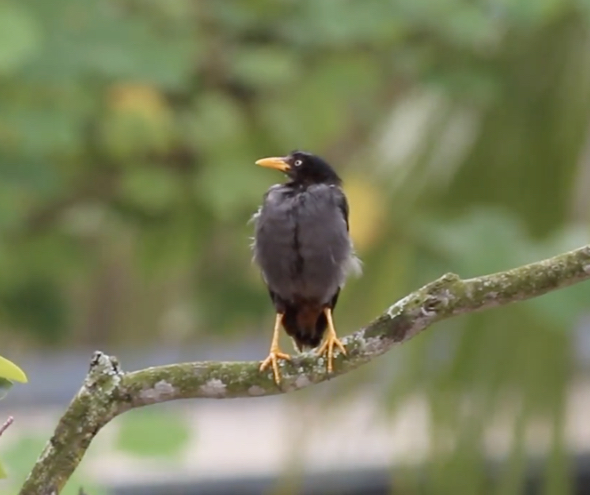We have been posting feather maintenance in the past, specifically preening, scratching, fluffing, etc. of different species of birds – see HERE, HERE and HERE.
In the present post we are seeing a Javan Myna (Acridotheres javanicus) spending about 10 minutes after a bath in a neighbour’s garden fountain to preen mainly individual body feathers. These are the smaller plumes and semi-plumes rather than long flight and tail feathers.

Preening here involves the myna grasping individual feathers near its base, then moves its mandibles along its shaft towards the tip. In doing this stale preen oil and dirt are removed. At the same time the barbs of the feathers are smoothened so that they lock together (see video below).
The breast and back feathers are easily accessible to the bill for preening. Not so feathers around the neck and head. Such feathers are taken care of by scratching. At regular intervals the myna uses either of its foot to vigorously to scratch its head.

Also seen were fluffing the body feathers and shaking the wings.
YC Wee
Singapore
20th June 2018








